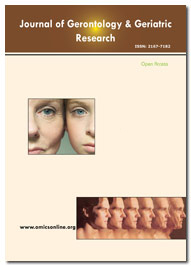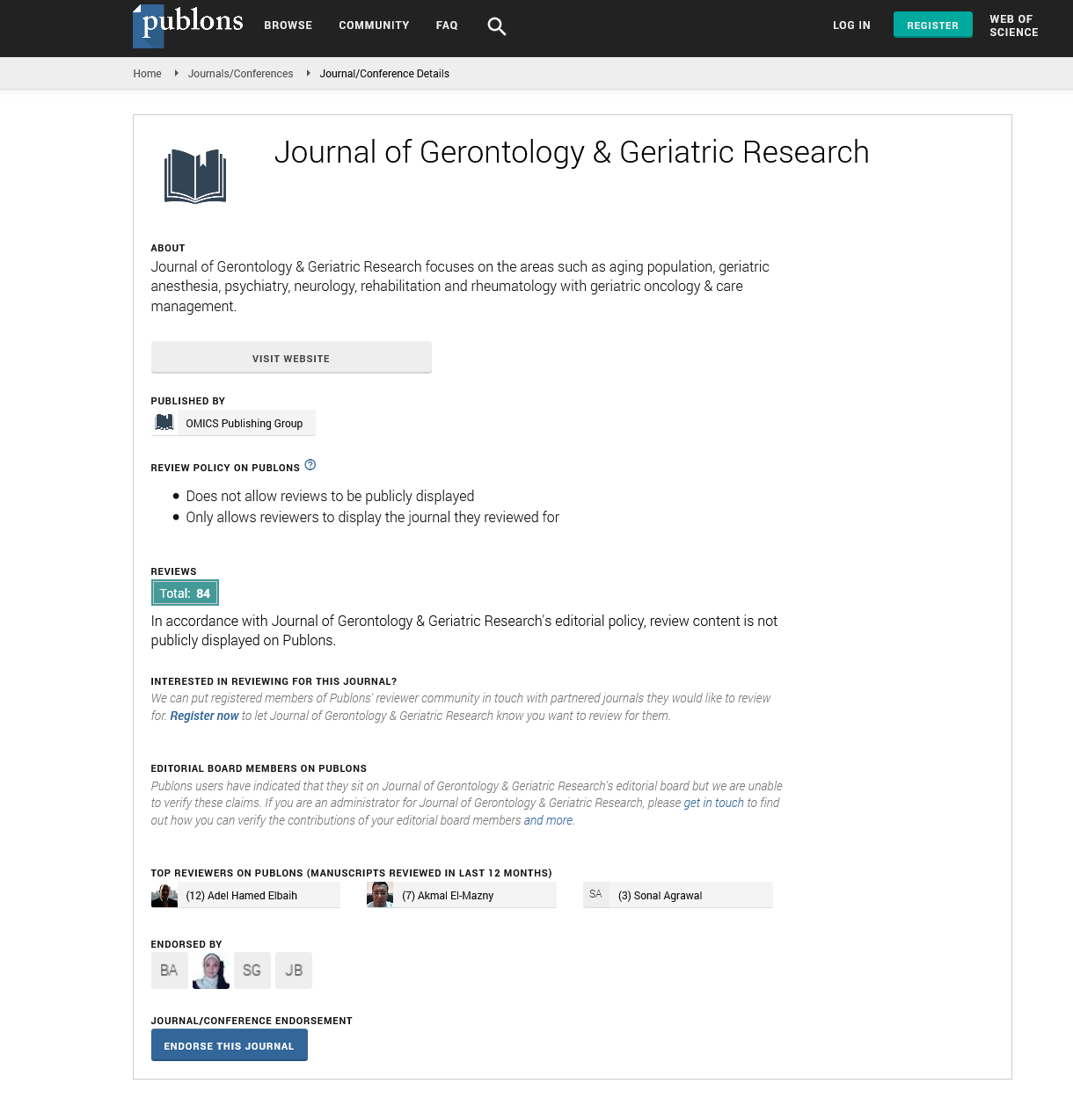Indexed In
- Open J Gate
- Genamics JournalSeek
- SafetyLit
- RefSeek
- Hamdard University
- EBSCO A-Z
- OCLC- WorldCat
- Publons
- Geneva Foundation for Medical Education and Research
- Euro Pub
- Google Scholar
Useful Links
Share This Page
Journal Flyer

Open Access Journals
- Agri and Aquaculture
- Biochemistry
- Bioinformatics & Systems Biology
- Business & Management
- Chemistry
- Clinical Sciences
- Engineering
- Food & Nutrition
- General Science
- Genetics & Molecular Biology
- Immunology & Microbiology
- Medical Sciences
- Neuroscience & Psychology
- Nursing & Health Care
- Pharmaceutical Sciences
Abstract
Temporal Disorientation Base Rates in Alzheimers Disease and Parkinsons Disease
Joseph J. Ryan, David S. Kreiner, Jennifer S. Seeley and Anthony M. Paolo
Base rates of impairment on the Temporal Orientation Scale (TOS; Benton et al.,) were reported for normal elderly (n=210) and patients with either Alzheimer’s disease (AD; n=112) or Parkinson’s disease (PD; n=189). The study hypothesis was that disorientation would be more frequent in ADs than in controls and PDs. Base rates for controls, PDs, and ADs were 1.00%, 22.22%, and 78.60% when disorientation was defined as ≥3 errors and 1.00%, 18.52%, and 72.30% when impairment was suggested by ≥4 errors. Receiver operating characteristic (ROC) analyses indicated excellent discrimination between controls and AD (AUC=0.919, 95% CI=0.879-0.958) along with good Sn and excellent Sp. Conversely, discrimination between control and PD groups was poor (AUC=0.642, 95% CI=0.587- 0.697) with low Sn and excellent specificity.

